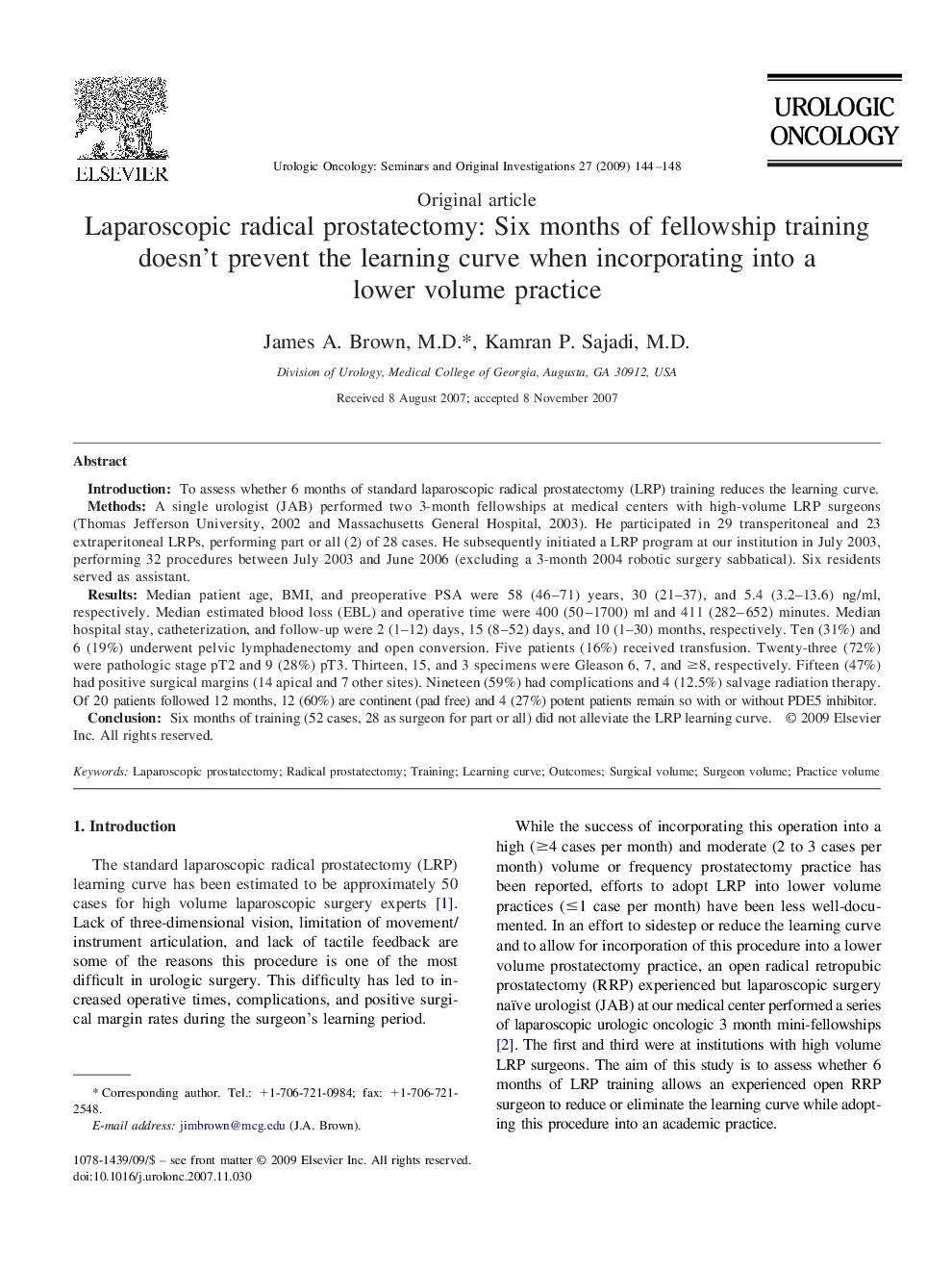| Article ID | Journal | Published Year | Pages | File Type |
|---|---|---|---|---|
| 4000893 | Urologic Oncology: Seminars and Original Investigations | 2009 | 5 Pages |
IntroductionTo assess whether 6 months of standard laparoscopic radical prostatectomy (LRP) training reduces the learning curve.MethodsA single urologist (JAB) performed two 3-month fellowships at medical centers with high-volume LRP surgeons (Thomas Jefferson University, 2002 and Massachusetts General Hospital, 2003). He participated in 29 transperitoneal and 23 extraperitoneal LRPs, performing part or all (2) of 28 cases. He subsequently initiated a LRP program at our institution in July 2003, performing 32 procedures between July 2003 and June 2006 (excluding a 3-month 2004 robotic surgery sabbatical). Six residents served as assistant.ResultsMedian patient age, BMI, and preoperative PSA were 58 (46–71) years, 30 (21–37), and 5.4 (3.2–13.6) ng/ml, respectively. Median estimated blood loss (EBL) and operative time were 400 (50–1700) ml and 411 (282–652) minutes. Median hospital stay, catheterization, and follow-up were 2 (1–12) days, 15 (8–52) days, and 10 (1–30) months, respectively. Ten (31%) and 6 (19%) underwent pelvic lymphadenectomy and open conversion. Five patients (16%) received transfusion. Twenty-three (72%) were pathologic stage pT2 and 9 (28%) pT3. Thirteen, 15, and 3 specimens were Gleason 6, 7, and ≥8, respectively. Fifteen (47%) had positive surgical margins (14 apical and 7 other sites). Nineteen (59%) had complications and 4 (12.5%) salvage radiation therapy. Of 20 patients followed 12 months, 12 (60%) are continent (pad free) and 4 (27%) potent patients remain so with or without PDE5 inhibitor.ConclusionSix months of training (52 cases, 28 as surgeon for part or all) did not alleviate the LRP learning curve.
